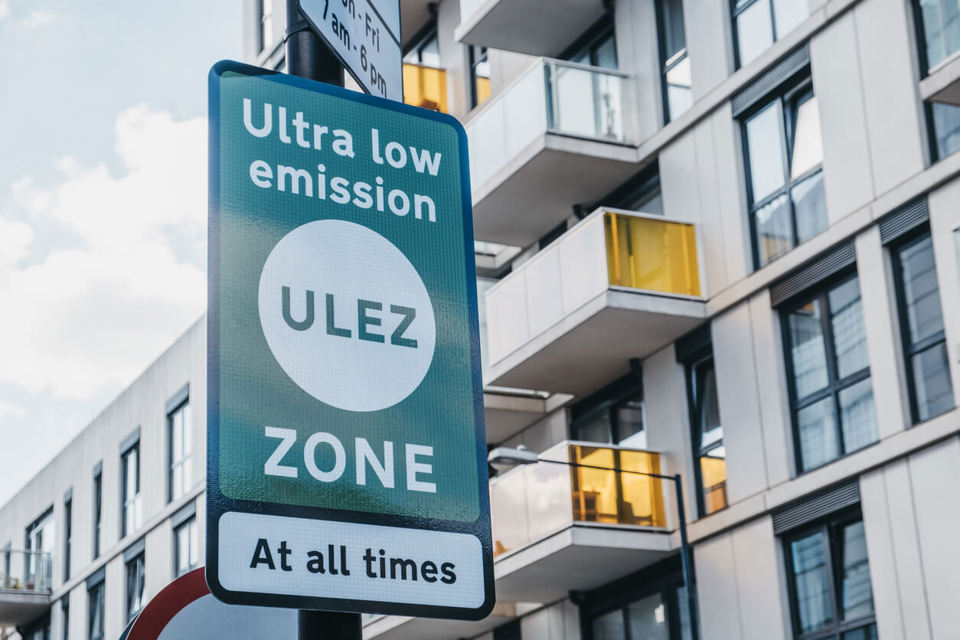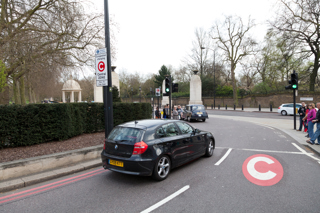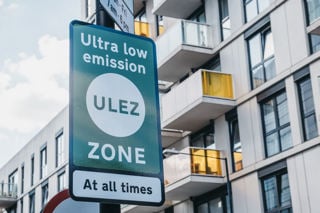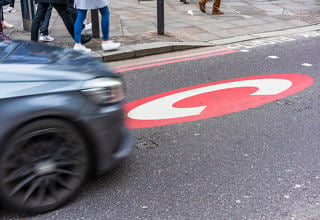Fleets face a £54 million bill in additional charges for entering the expanded ultra-low emission zone (ULEZ) in London over the next year, according to Masternaut.
The newly expanded ULEZ, which now covers an area up to, but not including, the North Circular Road (A406) and South Circular Road (A205), went live last week.
It is 18 times larger than the original central London ULEZ, which had occupied the same area as the congestion charge zone.
Andy Pass, VP for marketing, product and strategy at Masternaut, said: "As the Government continues to take strides towards net-zero by 2050, the expansion of ULEZ is an important step in achieving our targets for a greener future. The fleet industry, however, looks set to feel the financial impact of the expansion.
"Our figures show that this expansion is going to cost fleets with vans entering the ULEZ zone £54m over the next year, in additional charges.”
ULEZ EMISSIONS STANDARDS
ULEZ emissions standards for the newly expanded zone remain the same, with a minimum standard of: Euro 3 for motorcycles, mopeds, motorised tricycles and quadricycles; Euro 4 for petrol cars, vans and other specialist vehicles (up to and including 3.5 tonnes gross vehicle weight) and minibuses (up to and including 5 tonnes); and Euro 6 for diesel cars, vans and other specialist vehicles (up to and including 3.5 tonnes) and minibuses (up to and including 5 tonnes).
There is a £12.50 daily charge for driving within the ULEZ for vehicles which do not meet the ULEZ emissions standards.
In London, EDF estimates that diesel vehicles (including HGVs) are responsible for 89% of total NO2 concentrations from road transport, based on modelled data produced by Cambridge Environmental Research Consultants (CERC) for the Breathe London pilot.
Analysis of monitoring sites after the ULEZ start date and before the pandemic found a 25% drop in NO2 levels near roads inside the zone and an average 8% drop across London.
London’s CAZs are anticipated to contribute to a roughly 30% reduction in nitrogen oxide (NOx) road transport road transport emissions in Greater London.
PHEV DISCOUNT SCRAPPED
At the same time as the expanded ULEZ went live, the 100% discount on plug-in electric vehicles (PHEVs) entering the London congestion charge zone has been scrapped.
Speaking at a recent Cross River Partnership webinar on the ULEZ expansion, Tanya Ferguson, senior policy and programmes officer for the Greater London Authority (GLA), said: “We’re ending the cleaner vehicle discount for plug-in hybrids in recognition of the point that vehicles (irrespective of emissions) contribute to congestion and we want to be encouraging a shift to walking, cycling and (the use of) public transport.”
Prior to the change, only vehicles that emitted no more than 75g/km of CO2 and had a minimum 20-mile zero emission capable range, qualified for the 100% discount.
Now, only battery electric or hydrogen fuel cell vehicles are eligible for the cleaner vehicle discount, which Transport for London (TfL) says will be scrapped altogether from December 25, 2025.
From this date, all vehicle owners, unless in receipt of another discount or exemption, will need to pay to enter the congestion charge zone during charging hours.
Currently, the congestion charge, which is in addition to the ULEZ charge, operates from 7am to 10pm, seven days a week, with drivers paying £15 to enter the zone.
The fee was increased by 30%, from £11.50 a day, and the hours of operation extended by four hours a day and applied at weekends for the first time from June 2020, as a result of a funding agreement between the Government and TfL.
However, TfL is running a consultation on the future operation of the congestion charge, with the main proposals including no charges in the evenings to support London’s recovery, operating between 12-6pm on weekends and retaining the current charge level of £15.
The proposed new weekend charging hours are targeted at reducing congestion at the busiest times, said TfL.
ULEZ AND LEZ BENEFITS
The change to the London congestion charge comes as new research suggests that the benefits of both the capital’s ULEZ and low emission zone (LEZ) have been felt across the country.
The report, from the Environmental Defense Fund (EDF), suggests that heavy goods vehicles (HGVs) visiting the capital, which have to comply with minimum air quality standards, frequently travel far beyond the clean air zone’s (CAZ) boundary.
To examine the ‘reach’ of London’s air quality restrictions, EDF Europe analysed data from Inrix that showed HGVs covered on average twice as much distance outside the zone than within (33km/20.5m outside compared with 14km/8.7m inside).
HGVs it found travelling to and from the zone passed through 95% of major towns and cities in England and Wales, which, together, have a combined population of around 18 million people.
NEWLY EXPANDED ULEZ NOW LIVE
EDF’s findings were published ahead of the opening of the newly expanded ULEZ. Speaking alongside Ferguson at the Cross River Partnership event, Stephen Inch, principal policy and programmes officer at the GLA, said there were no plans to expand the ULEZ further.
“We think we’ve got the boundary in more or less the right place for the ULEZ and we have no plans to expand it, although we will be starting to look at what happens next in terms of moving to a zero emissions transport system,” he said.
London’s much larger LEZ, meanwhile, includes all roads within Greater London, those at Heathrow and parts of the M1 and M4, covering 1,500km2. The M25 is not included.
New rules for the LEZ were introduced in March for buses, coaches, lorries and vans more than 3.5 tonnes in line with the requirements in place for the ULEZ.
Vehicles adhering to the latest Euro VI standard pay nothing to enter the zone, while Euro V vehicles need to pay a daily charge of £100, and Euro IV vehicles and below face a daily charge of £300.
It operates 24 hours a day, every day of the year.
The EDF research suggests that 95% of HGVs, buses and coaches are meeting the LEZ standards, up from 87% in March and has almost doubled since the scheme was announced in February 2017.
Mayor of London, Sadiq Khan, said: “It is really encouraging to see businesses shifting to cleaner vehicles and 95% of heavy goods vehicles now meeting the low emission zone standards.”
He argues that the ULEZ expansion will bring “significant” health benefits to millions of Londoners and help tackle the climate emergency.
Alex Williams, TfL director of city planning, added: “The doubling in the number of vehicles that comply with the standards now compared with when they were announced has had a major positive impact on the air people breathe, not only around the capital but throughout the country.
“I would like to thank the operators, companies and drivers who have made the change to cleaner vehicles that meet or exceed the low emission zone standard.
“We know the pressures of the pandemic have been tough, but those making the transition are playing a key role in the green recovery.”
The success of the LEZ and the expansion of the ULEZ are central to the mayor’s twin goals of cleaning up London’s air and achieving a net carbon zero London by 2030.
The central London ULEZ, says TfL, has been “transformational” since its introduction in April 2019, helping to reduce roadside concentrations of nitrogen dioxide (NO2) in the CAZ by almost half.
Elizabeth Fonseca, senior air quality manager for EDF, said: “Heavy goods vehicles are a significant source of health-harming air pollution in our towns and cities, particularly for those who live, work and go to school near busy roads.
“By incentivising cleaner vehicles, clean air zones like London’s low emission zone are a critical tool for reducing pollution from transport and addressing health inequities.”
























Login to comment
Comments
No comments have been made yet.